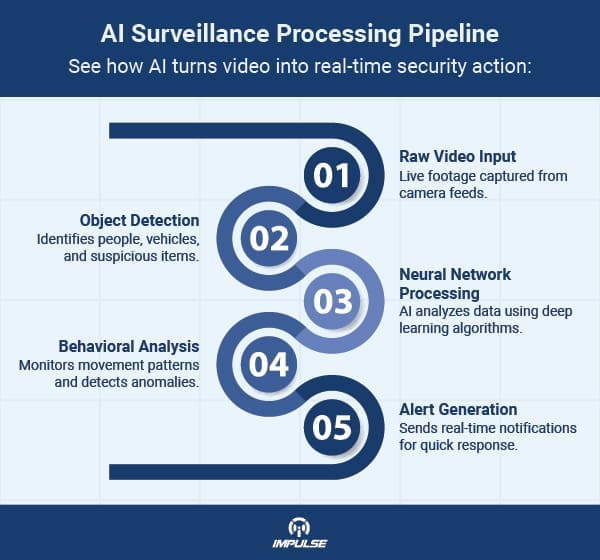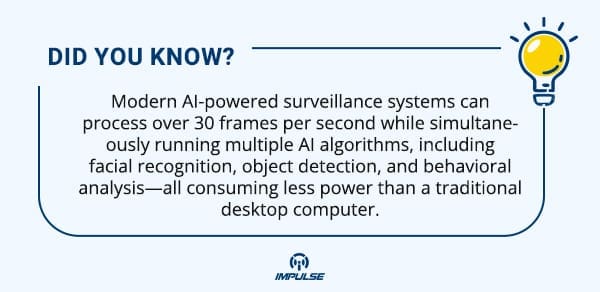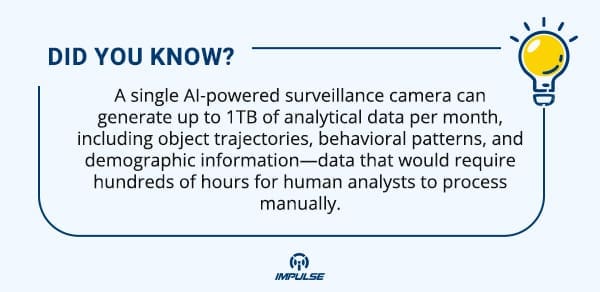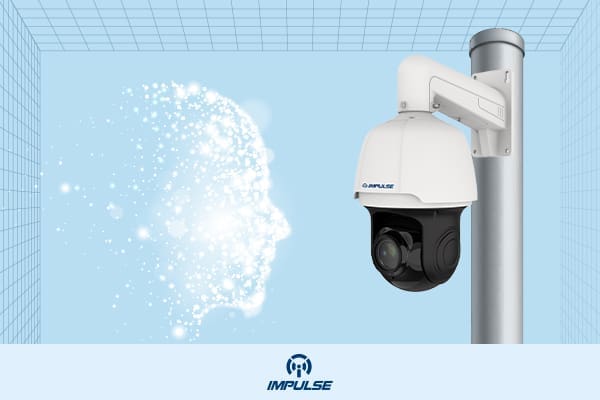Video surveillance has undergone a revolutionary transformation through the integration of deep learning technologies. Traditional CCTV systems, once limited to passive recording and basic motion detection, have evolved into intelligent, AI-powered surveillance systems capable of real-time analysis, predictive insights, and automated decision-making. This technological leap represents more than just an upgrade it’s a fundamental shift in
how we approach security, monitoring, and data analysis in surveillance applications.
Deep learning in CCTV systems leverages neural networks to process vast amounts of visual data, enabling cameras to “understand” what they’re observing rather than simply recording it. This advancement has opened new possibilities for proactive security measures, automated threat detection, and comprehensive behavioral analysis that was previously impossible with conventional surveillance methods.
Understanding AI-Powered Surveillance Systems
The Foundation of Deep Learning Video Surveillance
Artificial intelligence CCTV systems operate on sophisticated neural networks that mimic human visual processing. These systems use convolutional neural networks (CNNs) to analyze video frames, identifying patterns, objects, and behaviors with remarkable accuracy. Unlike traditional rule-based systems that rely on predefined parameters, deep learning algorithms continuously improve their performance through exposure to new data.
The core advantage of AI in video surveillance lies in its ability to process multiple video streams simultaneously while maintaining consistent performance. Modern smart surveillance with AI can handle complex scenarios such as crowded environments, varying lighting conditions, and dynamic backgrounds that would typically challenge conventional systems.

Advanced Capabilities of Neural Networks in CCTV
Deep learning object detection CCTV systems excel in multiple analytical functions, leveraging sophisticated algorithms to process and analyze video feeds in real-time. These systems combine advanced computer vision techniques with neural networks to deliver unprecedented accuracy and capabilities:
Real-time Object Recognition: Advanced algorithms can identify and classify hundreds of different objects, from vehicles and weapons to specific clothing items and personal belongings. The Impulse AI Box exemplifies this capability, supporting comprehensive target structuring across up to 16 video channels simultaneously.
Behavioral Analysis: These systems analyze movement patterns, detect unusual behaviors, and identify potential security threats before they escalate. The technology can distinguish between normal activities and suspicious behaviors, reducing false alarms while maintaining high detection accuracy.
Facial Recognition and Identification: AI facial recognition surveillance has reached unprecedented accuracy levels, capable of identifying individuals even in challenging conditions such as partial occlusion, varying angles, and different lighting scenarios.
Video Analytics with Deep Learning: Modern systems provide detailed analytics including crowd counting, dwell time analysis, traffic flow monitoring, and demographic insights. These capabilities transform surveillance from reactive monitoring to proactive business intelligence.

Technical Implementation and Hardware Solutions
High-Performance AI Processing Units
The heart of any effective deep learning video surveillance system lies in its processing capabilities. The Impulse AI Box represents cutting-edge AI processing technology, featuring ARM architecture that delivers exceptional performance while maintaining power consumption under 30W. This embedded solution supports face recognition, passenger flow analysis, and intelligent video analysis across multiple channels.
Key technical specifications include:
- Multi-protocol support (RTSP) for seamless integration
- API interfaces for third-party platform connectivity
- Flexible deployment options suitable for various scenarios
- Real-time processing capabilities for immediate threat response
Advanced Camera Technologies
Modern AI security camera systems require sophisticated image sensors and processing capabilities to feed quality data to deep learning algorithms. The Impulse AHD Bullet Camera incorporates a 1/2.7″ CMOS sensor with built-in intelligence features, providing crisp imagery essential for accurate AI analysis.
For enhanced surveillance applications, the Impulse Varifocal Network Bullet Camera offers superior flexibility with its 2.7mm to 13.5mm varifocal lens and 50-meter IR range. This camera’s edge analytics capabilities enable on-device processing, reducing bandwidth requirements while maintaining real-time monitoring effectiveness.
Indoor surveillance benefits significantly from dome camera configurations. The Impulse Fixed Network Dome Camera (IMP-LX-DOMF-500-3600) provides 60-meter IR range with comprehensive edge analytics, while the Impulse Motorized IR-Dome Camera (IMP-LX-DOMZ-500-2812) features 3D DNR technology and exceptional low-light performance with shutter speeds ranging from 1/3s to 1/100000s.
Transforming Security Operations
Real-Time Video Monitoring AI Capabilities
The integration of deep learning in CCTV systems has revolutionized real-time monitoring capabilities. Traditional surveillance required constant human oversight, but AI-powered systems can operate autonomously, alerting operators only when specific conditions are met. This selective alerting system dramatically reduces operator fatigue while ensuring critical events receive immediate attention.
Advanced systems can correlate data across multiple cameras, tracking objects and individuals throughout a facility. This comprehensive tracking capability enables security personnel to understand complete incident timelines and implement more effective response strategies.
Predictive Analytics and Proactive Security
Modern artificial intelligence CCTV systems don’t just react to events—they predict them. By analyzing historical data and current behaviors, these systems can identify patterns that indicate potential security threats. For example, the system might detect unusual gathering patterns that could indicate planned disruptions or identify individuals exhibiting suspicious reconnaissance behaviors.
This predictive capability extends to maintenance and operational efficiency. AI algorithms can predict equipment failures, optimize camera positioning, and suggest system improvements based on usage patterns and environmental conditions.

Cost-Effectiveness and ROI
While the initial investment in AI-powered surveillance systems may be higher than traditional CCTV, the long-term benefits significantly outweigh the costs. Reduced false alarms, improved incident response times, and enhanced analytical capabilities translate to substantial operational savings. Organizations typically see ROI within 12-18 months through reduced security personnel requirements and improved operational efficiency.
The modular nature of systems like the Impulse AI Box allows for scalable implementations, enabling organizations to start with essential features and expand capabilities as needs grow.
Implementation Strategies and Future Considerations
Deployment Best Practices
Successful implementation of deep learning video surveillance requires careful planning and strategic deployment. Camera positioning should consider AI processing requirements, ensuring optimal angles and lighting conditions for accurate analysis. The flexible deployment options of modern AI cameras, such as the varifocal capabilities of the Impulse Varifocal Network Bullet Camera , allow for post-installation optimization.
Integration with existing security infrastructure is crucial for maximizing system effectiveness. Modern AI surveillance systems support multiple protocols and provide comprehensive APIs for seamless integration with access control systems, alarm networks, and emergency response protocols.
Future Developments
The field of AI in video surveillance continues evolving rapidly. Emerging technologies include:
- Edge Computing Enhancement: More processing power at the camera level, reducing latency and bandwidth requirements
- Multi-Modal Analysis: Integration of audio analysis, thermal imaging, and other sensor data for comprehensive situational awareness
- Advanced Behavioral Modeling: More sophisticated algorithms for predicting and preventing security incidents
- Privacy-Preserving Technologies: Advanced anonymization techniques that maintain security effectiveness while protecting individual privacy
Scalability and Growth
Modern AI surveillance systems are designed for growth. The modular architecture allows organizations to add new cameras, expand processing capabilities, and integrate additional AI features without major system overhauls. This scalability ensures that investments in AI surveillance technology remain valuable as organizational needs evolve.
Conclusion
Deep learning in CCTV represents more than technological advancement—it’s a fundamental transformation in how we approach security and monitoring. From basic motion detection to sophisticated behavioral analysis, AI-powered surveillance systems provide unprecedented capabilities for protecting assets, understanding operational patterns, and making data-driven decisions.
The integration of advanced hardware solutions like the Impulse AI Box with high-performance cameras such as the Impulse camera series creates comprehensive surveillance ecosystems capable of adapting to diverse security challenges. These systems don’t just watch—they understand, analyze, and predict, providing security professionals with the tools needed for proactive protection.
As artificial intelligence continues advancing, surveillance systems will become even more intelligent, efficient, and capable. Organizations that embrace these technologies today position themselves at the forefront of security innovation, ready to meet tomorrow’s challenges with today’s most advanced solutions.
Transform your security with Impulse’s AI-powered surveillance solutions. Our deep learning CCTV systems deliver intelligent analytics and real-time threat detection for superior protection.


